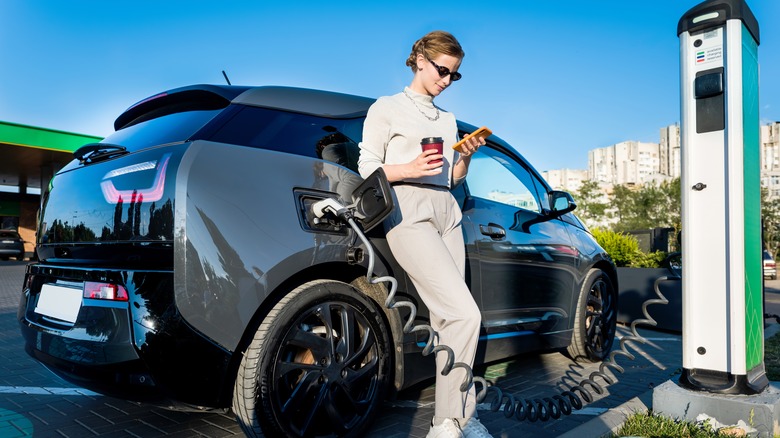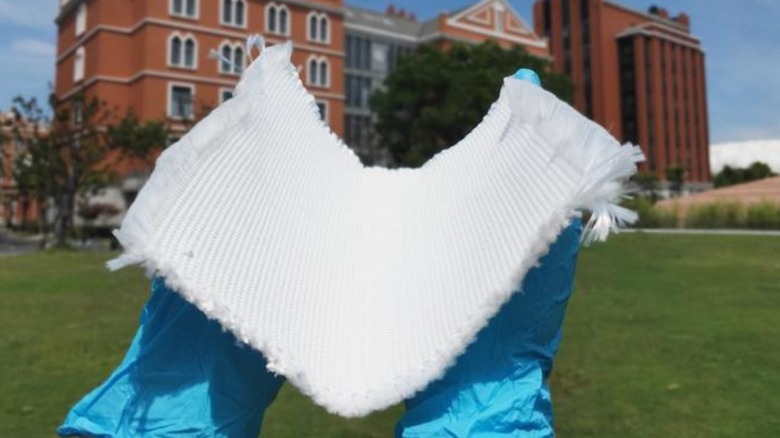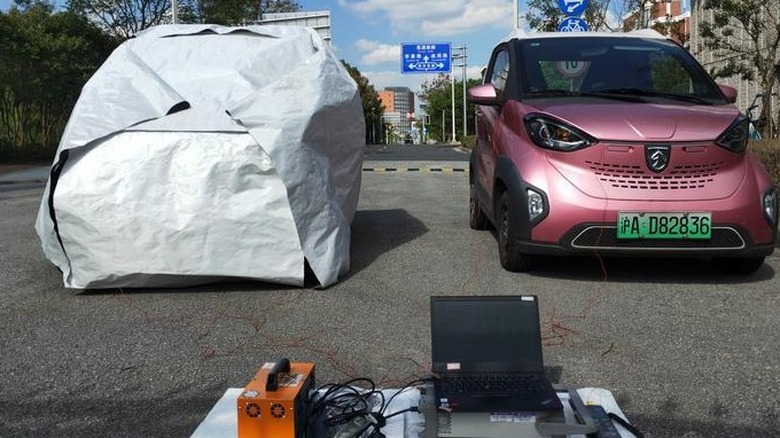This Ingenious Car Cover Can Protect EV Batteries From Shifting Weather Extremes
The batteries powering electric cars are known to be susceptible to temperature extremities. For example, an EV's range takes a hit as the temperature drops, while charging times go up. It's a temporary adjustment, but for people living in areas with prolonged cold spells, it's a hassle.
During day and night times, temperatures can also change dramatically and these fluctuations are also known to impact the battery lifespan. In hot environments, the energy load of cooling the cabin of an electric car is not insignificant. But deploying a temperature regulation system to keep an EV thermally shielded comes with an energy cost.
At the heart of all temperature-sensitive EV woes are the electrochemical reactions powering the battery. When the external temperature falls, the pace of chemical reactions slows down, and hence, it takes longer to charge the battery. Thankfully, scientists have developed a cover that doesn't need external power and protects EVs in summers and winters.
Researchers at the Shanghai Jiao Tong University now claim to have created a passive thermal cloak that can bring down a vehicle's temperature by 8 Degree Centigrade when it's hot outside during the daytime and keep it warmer by up to 6.8 Degree Centigrade when it's cold at night.
The word "passive" is of great importance here, because the cloak doesn't require an external energy source to do its job. But in order to understand why this cloak could be a major breakthrough, we must first understand why temperatures are a real menace for electrical cars.
The temperature wrath for EVs
A common battery degradation scenario that happens due to high-current charging at low temperatures is called Lithium Plating. It is touted to be the "most severe aging process in Li-ion batteries" happening at low temperatures, one that dramatically reduces the amount of cyclable Lithium.
According to this research paper, Lithium plating is unique compared to other forms of material degradation because of its dependence on external temperature. Plus, it only worsens over time as a new surface layer forms, isolating the active material required for the electrochemical reactions. Talking electrochemistry here, electrolyte decomposition also happens at high temperatures in EV batteries.
Another research paper published in the IEEE Journal mentions that higher temperature increases the cost of EV battery wear and brings down the battery life cycle. A research paper published by the American Automobile Association concluded that when the average ambient temperature rises to 95 degrees Fahrenheit compared to EV tests conducted at 75 degrees Fahrenheit, it resulted in "a 17 percent decrease of both combined driving range and combined equivalent fuel economy."
Losses could go all the way up to 41% when using in-vehicle heating and cooling systems. Electric car maker Polestar advises in its help documentation that if the weather outside is cold and you are worried about the powertrain operating at a lower efficiency, pre-heating the car while it's plugged in can offer some range gain.
How effective is this passive cloak?
During tests, the team found that when the external temperature was around 31 degrees Centigrade, the cabin temperature of a cloak-covered electric car was maintained at 22.8 degrees Centigrade. In comparison, the cabin temperature of the car without any kind of thermal cover reached a staggering 50.5 degrees Centigrade during the peak of the daytime, which amounts to a staggering difference of 27.7 degrees Centigrade.
Switching the temperature scenario, the cloak kept the cabin temperature about 7 degrees Centigrade hotter than the cold environs at night time. Notably, the cabin temperature never dipped below 0 degrees Centigrade irrespective of how cold it got outside during winter.
The cloak follows a dual-layer design. The external layer is made out of thin fibers of silica — the same material that makes beach sand, granite, and glass, and also happens to be one of the most abundant materials on Earth. The silicon fibers were then coated with hexagonal boron nitride — which is industrially used for enhancing thermal conductivity and insulation coatings — in the form of flakes.
In this case, the team used the boron derivative to enhance the cloak's solar reflectivity. The inner layer, on the other hand, is made out of an aluminum alloy. The fibers are subsequently weaved together to form a fabric sheet. The researchers call it a Janus thermal cloak (JTC), named after the Roman god Janus, who is often depicted with two faces and also lends his name to the month of January.
Easy to source, resilient, and extremely promising
In the research paper published in the journal Cell, the team behind the research notes that "all-season temperature regulation on real-world objects has not yet been achieved through truly passive, reliable structures." While overcoming the aforementioned challenges is a remarkable feat in itself, the team also made sure that the cloak is as easy to manufacture as it is effective.
In designing their novel thermal cloak, the team also took special care about the design simplicity, ensuring that it is scalable and can be produced industrially on a large scale without any technical or material sourcing-related hassles. Another notable aspect is that the passive cloak is "fire retardant, reliable in thermal, cryogenic, vibration, and corrosive environments."
Technically described as a phononomic metafabric, the cloak also exhibited excellent fire retardant and thermal stability. The team tested the cloak against a butane torch reaching a temperature of around 1,400 Degrees centigrade. The cloak's surface reached about 800 degrees centigrade but quickly cooled down to 10 degrees Centigrade.
Even in extremely cool conditions where the temperatures dipped to negative 196 degrees Celsius, the cloak maintained its material stability, solar reflectivity, and emissivity. Given the cloak's excellent resistance, the research paper says it can also be applied to temperature regulation in buildings, spacecraft, and even to building extraterrestrial habitats of the future.



